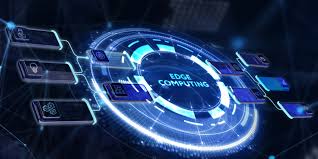For years, cloud computing has been the backbone of modern AI applications, enabling everything from voice assistants and smart home devices to data analysis and automation. However, with the rise of Edge AI and on-device processing, the reliance on cloud-based computing is beginning to shift.
Could this mark the decline of cloud computing as we know it?
What is Edge AI?
Edge AI refers to the ability to run artificial intelligence algorithms directly on local devices instead of relying on remote cloud servers. This means smartphones, IoT devices, and even cars can process data in real-time without an internet connection.
How Does Edge AI Work?
- AI chips (NPUs, TPUs, GPUs) – New processors like Apple’s Neural Engine or Qualcomm’s AI-powered Snapdragon chips enable on-device machine learning.
- Embedded AI models – Instead of streaming data to the cloud, AI models run locally, reducing lag.
- Efficient processing – Modern AI models are optimized for minimal power consumption.
Why Edge AI is Replacing Cloud Computing
The transition to Edge AI and on-device processing is being driven by several key factors:
1. Lower Latency & Faster Processing
- Real-time applications (e.g., self-driving cars, medical diagnostics, intelligent assistants) can’t afford the delay caused by cloud processing.
- On-device AI allows instant decision-making without waiting for cloud servers to respond.
2. Privacy & Security Benefits
- Cloud computing relies on sending data to external servers, raising privacy concerns.
- With Edge AI, data is processed locally, reducing the risk of hacks, leaks, and surveillance.
3. Reduced Internet Dependency
- Cloud computing requires a constant internet connection—Edge AI works offline.
- Useful for applications in remote areas, autonomous vehicles, and disaster response.
4. Energy Efficiency & Cost Savings
- Cloud computing requires massive data centers, consuming significant energy.
- On-device AI reduces the need for continuous cloud communication, cutting costs and energy use.
Industries Driving Edge AI Adoption
Several industries are moving away from cloud dependency and embracing on-device AI processing:
- Smartphones & Wearables – AI-powered chips (Apple A17, Google Tensor, Qualcomm AI Engine) allow real-time photo processing, voice assistants, and security features without cloud reliance.
- Autonomous Vehicles – Self-driving cars use Edge AI for real-time obstacle detection and navigation.
- Healthcare & MedTech – AI-driven diagnostics and wearable health monitors can analyze data instantly without cloud delays.
- Industrial Automation – Edge AI is used in smart factories, predictive maintenance, and robotics.
Will Cloud Computing Become Obsolete?
While Edge AI reduces cloud dependency, cloud computing is unlikely to disappear entirely. Instead, we’ll see a hybrid model where:
- Cloud is used for large-scale AI training and storage.
- Edge AI handles real-time tasks on devices.
- 5G and AI-optimized networks enhance Edge AI capabilities.
Final Thoughts
Cloud computing has dominated AI development, but Edge AI and on-device processing are the future. With lower latency, improved privacy, and reduced costs, Edge AI is set to transform how we interact with technology—minimizing reliance on the cloud and bringing AI closer to the user.
Would you like this expanded into a more detailed blog post?

